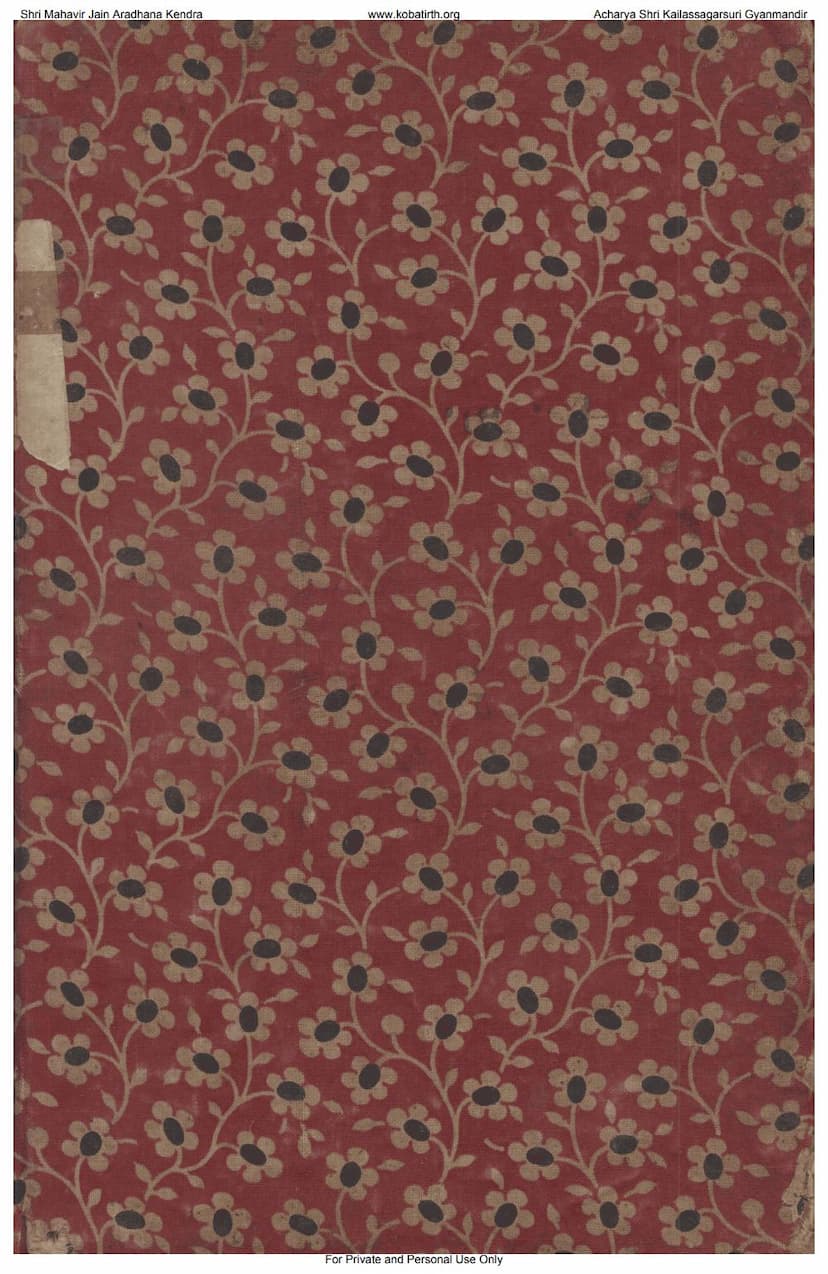Tibba Ratnakar
Added to library: September 2, 2025

Summary
This comprehensive summary is based on the provided text of the Jain book "Tibba Ratnakar" by Kanhaiyalal Munshi and Bansidhar Munshi, translated into Hindi.
Book Title: Tibba Ratnakar (meaning "Jewel Mine of Tibb" or "Treasure of Tibb") Authors: Kanhaiyalal Munshi, Bansidhar Munshi Publisher: Kanhaiyalal Munshi Original Language of Source: Unani (Tibb) Translated Language: Hindi
Overview:
"Tibba Ratnakar" is a Hindi translation of a renowned Unani medical text titled "Karawadeen Ahsani" by Meer Ahsan Ali. The book aims to make the knowledge of Tibb (Unani medicine) accessible to Hindi-speaking individuals who are interested in learning about medicinal preparations and their applications for various ailments. The translator, Lala Pyarelal, undertook this extensive work with the intention of benefiting a wide audience, including medical practitioners, hakims, vaids, scholars, businessmen, and the general public. The book is presented as a detailed guide to preparing a vast array of medicinal remedies.
Content Structure:
The book is structured into numerous "Fasals" (Chapters or Sections), each dedicated to specific types of medicinal preparations, their ingredients, preparation methods, and their therapeutic uses. The content is organized logically to cover a broad spectrum of medical knowledge within the Tibb system.
Key Sections and Their Contents:
The book meticulously details the preparation of various medicinal forms, including:
-
Medicinal Preparations (Fasals 1-18):
- Single Medicinal Herbs (Fasal 1): Discusses the proper handling, preservation, and understanding of the properties of medicinal herbs. It categorizes herbs into different types based on their origin and potency.
- Compound Preparations (Fasal 2): Details the preparation of various compound medicines like "Sufuf" (powders/decoctions), "Fankis" (snuff-like preparations), "Golis" (pills), "Majuns" (electuaries/pastes), "Marham" (ointments/creams), and more. It also touches upon the history and origin of some of these forms.
- Special Chapters on Measurement and Principles (Fasal 3): Focuses on the principles of weighing ingredients, understanding terminology, and adapting recipes based on availability and efficacy. It emphasizes the importance of accurate measurements and potential substitutions.
-
Specific Ailments and Their Treatments (Fasals 4-42 and beyond): The bulk of the book is dedicated to addressing a wide range of diseases and ailments through precise medicinal formulations. This is categorized into numerous specific chapters, each detailing remedies for:
- Fever and Respiratory Issues: Remedies for various types of fevers, coughs, colds, nasal congestion, and breathing difficulties.
- Digestive Disorders: Treatments for indigestion, stomach pain, bloating, loss of appetite, constipation, and diarrhea.
- Pain and Inflammation: Remedies for joint pain, muscle pain, swelling, and pain in specific body parts.
- Skin Conditions: Treatments for itching, rashes, wounds, and other skin ailments.
- Nervous System Disorders: Remedies for paralysis, tremors, dizziness, and nervous weakness.
- Genito-Urinary Issues: Treatments for kidney and bladder problems, urinary tract infections, and impotence.
- Eye and Ear Ailments: Remedies for eye infections, blurred vision, and hearing problems.
- Head and Neurological Conditions: Treatments for headaches, migraines, and neurological disorders.
- Specific Diseases: The book covers a vast array of conditions, including but not limited to: urinary stones, liver and spleen disorders, hemorrhoids, gout, hysteria, and general debility.
-
Different Forms of Medication: The text systematically outlines the preparation of diverse medicinal forms, including:
- Powders (Sufuf): Finely ground herbs and minerals.
- Pills (Golis): Medicines formed into small, digestible spheres.
- Pastes/Electuaries (Majuns): Semi-solid preparations mixed with honey or jaggery.
- Ointments/Creams (Marham): Topical applications for skin ailments.
- Oils (Tel): Medicated oils for external application or other uses.
- Decoctions (Kada): Boiled herbal mixtures.
- Syrups (Sharbat): Sweetened liquid preparations.
- Inhalations (Nafath): Preparations for inhalation.
- Lotions/Pastes (Lepa): Topical applications for skin and wounds.
- Pastes for Internal Application (Abshan/Nuzul): Medicines administered through the nose or other orifices.
- Enemas (Zaruk): Preparations for rectal administration.
- Liniments (Til): Medicated oils for massage.
- Powders for Teeth (Sunoon): Tooth powders and dentifrices.
- Kohl (Surma): Eye cosmetic and medicinal preparation.
- Potions/Concoctions (Qahva): Various types of medicinal drinks.
- Confections (Murabba): Preserved fruits in syrup.
- Embrocations (Marham): Topical remedies.
- Poultices (Khumra): Soft masses applied to a wound.
- Tinctures (Arka): Liquid extracts.
- Fermented Preparations (Khamira): Fermented medicinal substances.
-
Detailed Ingredient Information: The book provides details on the properties (hot/cold, dry/moist) of various ingredients and their specific uses, often drawing from classical Unani texts and observations.
Translation and Accessibility:
The translation into Hindi by Lala Pyarelal is highlighted as a significant effort to bridge the language barrier, making this valuable medical knowledge available to a wider audience. The book emphasizes clarity in its Hindi explanations to ensure that practitioners and students can understand and apply the medicinal recipes correctly.
Concluding Remarks:
The preface and concluding remarks express the translator's hope that this work will be a valuable resource for the well-being of humanity. It also includes a note regarding the book's registry fee and a disclaimer about unauthorized copies.
In essence, "Tibba Ratnakar" is a comprehensive pharmacopoeia within the Unani system, meticulously detailing the preparation and application of a vast array of natural remedies for numerous ailments. It serves as a bridge between classical Unani medical knowledge and the Hindi-speaking community, offering practical guidance for health and healing.